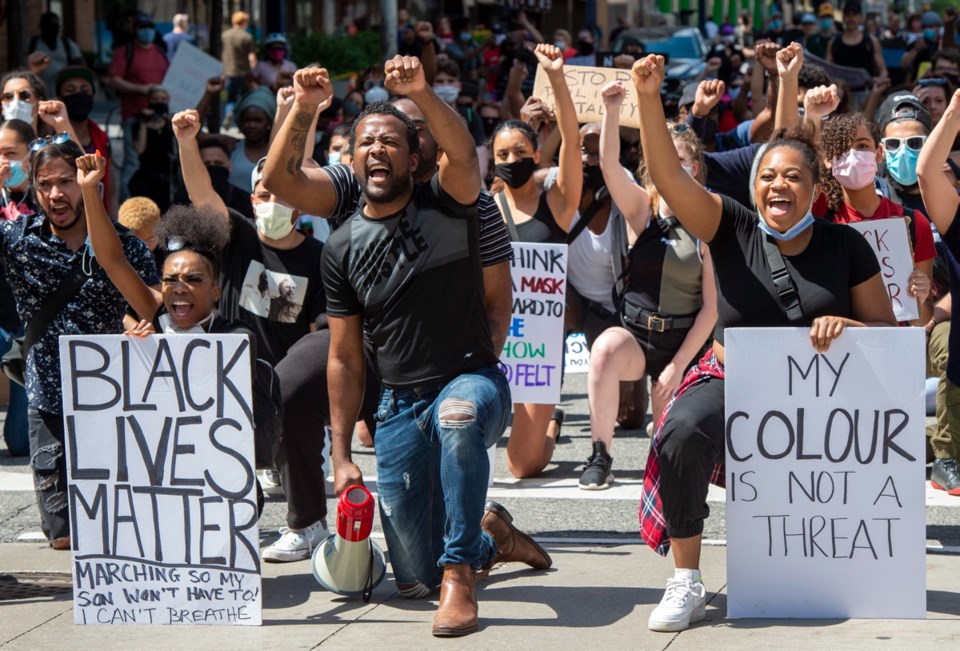After months of tumbleweeds rolling down empty city streets, those same streets are now filled with people seeking to be heard and to breathe — and not because of loosening pandemic restrictions.
In a space of days, we’ve gone from confronting COVID-19 to confronting the effects of racism and discrimination throughout our society.
We’ve seen how physical and verbal abuse damages and ends lives. But the movement on the streets, online and among work communities is bringing attention to how quiet behaviour and attitudes — intentional, thoughtless, or unknowing and unaware — can cause similar and often hidden harm.
A couple of weeks ago, we were talking about how the pandemic shutdowns provided an opportunity to reorder the world intentionally as part of the post-health-crisis restart. Many people saw that we could use the reopening of economies to address major problems and concerns faced by society and the world.
The restrictions exposed the cracks in our society, the fractures among our families, and the flaws in many of our systems. When so many parts of the world shut down, the weaknesses in how our lives are structured could no longer be avoided. Domestic abuse, mental health, homelessness, lack of support for seniors, young adults and young families, and the precarious nature of much work deemed essential yet done by some of the most poorly paid among us — these problems have long existed but are usually plastered and painted over, like mould in a building.
It took closing businesses, schools and offices, a nosediving economy, and hospitals and health-care workers standing by for a potential flood of COVID-19 cases such as Italy, France, Seattle and New York City saw to make us stop and pay attention.
And when we did, the problems stared right back at us.
As the pandemic unfolded, some problems were acknowledged. Some were temporarily addressed. Some employers of essential services topped up the wages of their front-line workers. Governments have stepped in with emergency-response programs to help individuals, businesses, non-profit agencies and industries. Changes to how work is conducted were mandated to keep people safe.
Those are only the problems that became most obvious when the shutdown occurred. With time, the existence of other problems — as persistent, but long shoved deeper into the flawed structure of our society — have emerged.
As many of the protesters have noted over the last couple of weeks, Canada has its own shameful past regarding racism. We carry the infamy of past harms — smallpox-infected blankets distributed to Indigenous peoples, residential schools, the segregation of black children in Ontario schools in the 1800s, the Komagata Maru, the turning away of non-white, non-Christian refugees during the Second World War, Saskatoon’s “starlight tours,” whereby city police dropped off intoxicated First Nations membersway out in the countryside to “walk it off,” even in deep winter … and the list goes on.
But just as the past few months have exposed other unpleasant truths about Canadian society, they have also revealed that racism resides just below Canadian society’s polite surface.
The recent attacks on people of Asian heritage in the Lower Mainland, the shooting of Chantel Moore, the beating of Chief Allan Adam and the death of Regis Korchinski Paquet belie the lies we tell ourselves. These are overt acts. They’re easier to spot and address.
The people whose attitudes have silently seeped into society for years rarely make the news. Those attitudes are much harder to expose and change. Whether we’re aware of and acknowledge our biases and prejudices or are oblivious to them, the harm we cause with them is just as real. Nobody has a right to make others feel unsafe and unwelcome in the communities they call home, the workplaces they are part of, the schools they attend, and the professions they contribute to.
Now that these uncomfortable truths are in the open, enough is enough — it’s time to deal with them and make a better world. For all peoples.



